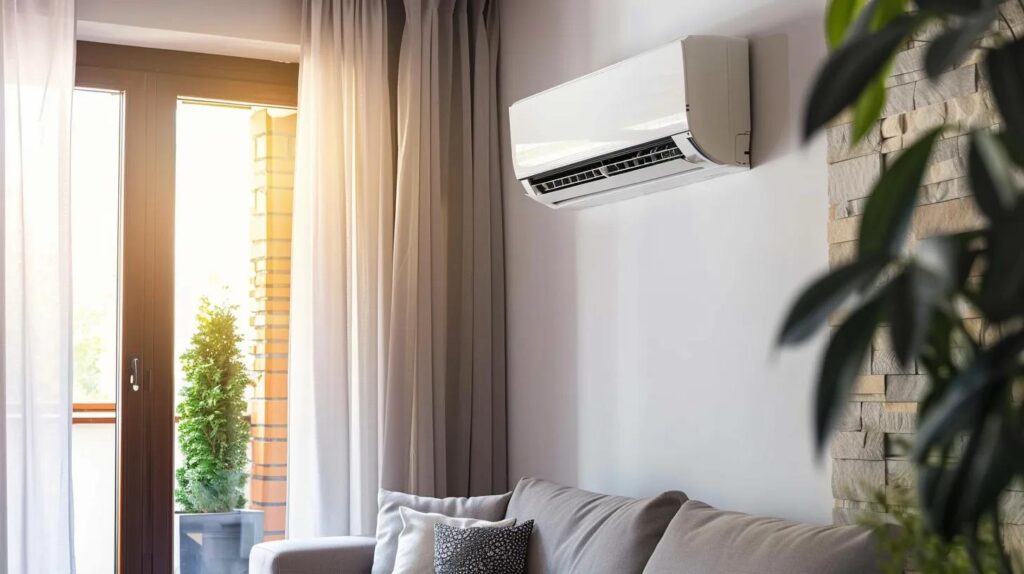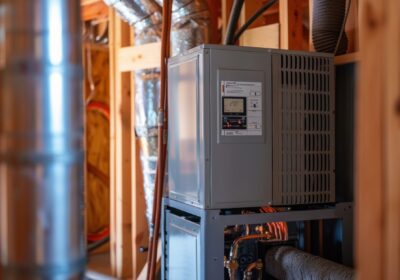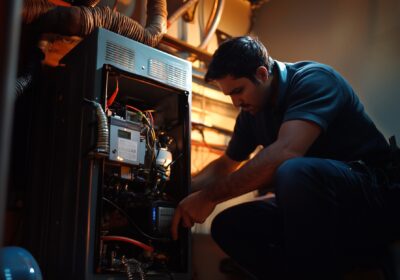
Unlock Superior Comfort and Savings with Ductless Mini-Split Systems
Experience precise climate control with ductless mini-split systems, bypassing traditional ductwork for efficient, room-by-room heating and cooling that can slash energy use by up to 50 percent. For Baton Rouge homeowners grappling with high utility bills and inconsistent temperatures, modern mini-splits offer a promise of tailored comfort, cleaner air, and significant long-term savings. This guide dives into how inverter-driven compressors and high SEER ratings drive exceptional energy efficiency, explores advanced filtration for a healthier home, and highlights the benefits of zoned comfort that banish hot and cold spots. We’ll also cover their whisper-quiet operation, flexible installation for any renovation, and maintenance advantages that keep costs down. Plus, hear from local homeowners and learn how Baton Rouge Air Conditioning & Heating provides expert installation and support to ensure your system performs flawlessly. Get ready to discover every advantage of ductless mini-splits and take the first step toward transforming your home environment by scheduling a consultation.
What Are the Key Energy Efficiency Benefits of Ductless Mini-Split Systems?
Ductless mini-splits achieve peak energy efficiency by employing inverter technology. This allows the compressor speed to precisely match your home’s heating or cooling needs, drastically reducing wasteful on/off cycles and minimizing energy loss. The result is consistent comfort without the energy drain of traditional systems or leaky ductwork. With high Seasonal Energy Efficiency Ratio (SEER) ratings, mini-splits consistently outperform older systems, translating directly into lower utility bills.
Here’s a quick look at the core efficiency advantages of ductless mini-splits:
- Fine-tuned temperature adjustments keep your climate stable and minimize energy waste.
- Inverter-driven compressors continuously adapt output, cutting down on peak power demands.
- No ductwork means you avoid the up to 30 percent energy loss common with leaky ducts.
- High SEER ratings ensure your system meets top-tier efficiency standards.
- Zoned control lets you focus energy only where it’s needed, avoiding waste in unused areas.
| System Type | Energy Savings (%) | Key Feature |
|---|---|---|
| Single-Zone Mini-Split | 20–35 | Variable-speed inverter |
| Multi-Zone Mini-Split | 30–50 | Independent zone control |
| Central Ducted System | 0–20 | Fixed-speed compressor |
These efficiency gains set the stage for comparing mini-splits to conventional systems and exploring local incentives, which we’ll cover next.
How Do Mini-Splits Reduce Energy Consumption Compared to Traditional HVAC?
Mini-splits dramatically cut energy use by conditioning only the zones you need, rather than forcing a single compressor to heat or cool your entire house. This smart approach prevents wasting energy on empty rooms and eliminates the significant losses from ductwork, which can account for over 30 percent of a traditional system’s inefficiency. The outcome is a more balanced, demand-driven energy profile that leads to tangible cost savings and superior comfort.
By continuously adjusting compressor speed, mini-splits maintain your desired temperature without the energy-intensive start-stop cycles common in older systems. This smooth, steady operation not only enhances system longevity but also lowers peak electricity usage, especially during extreme weather.
What Role Do SEER Ratings and Inverter Technology Play in Energy Savings?
High SEER ratings and inverter technology work hand-in-hand to deliver both impressive energy efficiency and rapid response. SEER is a measure of seasonal performance, with higher ratings indicating more cooling output for each unit of energy consumed. Inverter-driven compressors dynamically adjust power usage to maintain your set temperature, sidestepping the energy spikes of traditional on/off cycling. Together, these innovations can slash electricity consumption by up to 50 percent compared to standard fixed-speed systems, giving you ultimate control over both comfort and your budget.
Regular tune-ups by certified professionals ensure your inverter and heat-exchange components operate at peak efficiency, preserving your savings year after year and guaranteeing reliable system performance.
How Can Baton Rouge Homeowners Maximize Savings with Local Rebates and Incentives?
Take advantage of local energy programs and utility rebates designed for high-efficiency HVAC systems to significantly reduce the cost of installing SEER-rated mini-splits in Baton Rouge. These incentives can include rebates for ENERGY STAR® certified models, state tax credits, and convenient on-bill financing options that lower your upfront investment. By combining manufacturer offers with local utility programs, you can potentially offset up to 30 percent of the equipment cost, accelerating your return on investment.
Partnering with a professional HVAC provider ensures you accurately qualify for and easily manage all available rebates, allowing you to focus on enjoying the enhanced comfort and savings that ductless mini-split systems provide.
How Do Ductless Mini-Split Systems Improve Indoor Air Quality?

Ductless mini-split systems elevate your indoor air quality through advanced multi-stage filtration and by eliminating ductwork, a common breeding ground for dust, mold spores, and allergens. High-efficiency filters capture even the smallest particles, while optional electrostatic or carbon filters neutralize odors and volatile organic compounds (VOCs). This sophisticated system promotes a healthier breathing environment, especially crucial in humid climates prone to microbial growth.
Modern mini-split air handlers often feature these advanced filtration capabilities:
- Pre-filters that effectively trap pet dander, hair, and larger airborne particles.
- High-density mesh filters designed to capture finer dust and pollen.
- Activated carbon layers that adsorb common household odors and chemicals.
- Optional anti-microbial coatings to actively inhibit mold and mildew growth.
By maintaining consistent airflow through sealed indoor units, mini-splits prevent the cross-contamination of air between rooms, significantly reducing the risk of respiratory irritation and allergen buildup.
| Filtration Stage | Particle Type | Filtration Efficiency |
|---|---|---|
| Pre-Filter | Dust and pet hair | Up to 90 percent removal |
| High-Density Mesh | Pollen and mold | Up to 70 percent removal |
| Activated Carbon Layer | VOCs and odors | Adsorbs odors effectively |
These powerful filtration features contribute to a healthier home atmosphere and pave the way for discussing humidity control benefits in the next section.
What Advanced Filtration Features Do Mini-Splits Offer to Reduce Allergens?
Mini-split systems utilize multi-layered filter designs to capture allergens at various stages, from initial coarse screening to ultra-fine particle capture. Electrostatic filters actively charge airborne particles, causing them to cling to the filter media more effectively. This comprehensive approach can reduce airborne contaminants down to 0.3 microns, providing significant relief for allergy sufferers and enhancing respiratory comfort throughout your home.
Advantages of Ductless Mini-Split Systems Compared to Conventional HVAC
Ductless mini-split systems can offer several advantages over conventional systems, including
How Does the Absence of Ductwork Prevent Air Contaminant Recirculation?
By eliminating ductwork, mini-splits remove the hidden pathways where dust, mold, and other contaminants can accumulate and recirculate, thereby blocking a major source of indoor air pollution. Each indoor unit draws air directly from its designated zone, filters it thoroughly, and then recirculates clean air back into the room. This ensures that contaminants do not travel between spaces, maintaining superior overall air quality.
Can Mini-Splits Help Control Humidity for a Healthier Home Environment?
Absolutely. Ductless mini-splits provide precise humidity control by adjusting fan speed and refrigerant flow to effectively remove or retain moisture as needed. In dehumidification mode, excess humidity condenses on the system’s coils and is drained away, helping to maintain ideal indoor humidity levels between 40–60 percent. This capability significantly reduces the risk of mold growth, protects wood finishes, and enhances overall occupant comfort.
What Are the Zoned Comfort Advantages of Ductless Mini-Split HVAC Systems?
Ductless mini-split HVAC systems excel at delivering zoned comfort, allowing you to set independent temperatures in each room. This capability effectively eliminates hot and cold spots, catering precisely to individual preferences. Each indoor unit operates autonomously, empowering occupants to adjust climate conditions based on activity or occupancy without impacting other areas of the home. This level of targeted control boosts both satisfaction and energy efficiency.
Key advantages of zoned comfort include:
- Personalized temperature settings for every living area, home office, or bedroom.
- Elimination of uncomfortable temperature imbalances caused by inefficient duct layouts.
- Easy zone management via centralized control panels or convenient smartphone apps.
- The ability to turn off conditioning in unoccupied zones to conserve energy.
- Quiet indoor units that blend seamlessly with your décor and minimize disruption.
This granular approach to comfort ensures every member of your household enjoys their ideal environment while providing additional energy savings by avoiding the conditioning of unused spaces.
| Zone Configuration | Comfort Benefit | Energy Impact |
|---|---|---|
| Single-Zone | Personal control | Minimal energy for one room |
| Dual-Zone | Shared living areas | Balanced cooling/heating |
| Multi-Zone (4+ rooms) | Whole-home tuning | Scalable energy savings |
These zoned capabilities work in tandem with broader efficiency gains, which we’ll explore further when discussing how to eliminate hot and cold spots.
How Does Individual Room Temperature Control Eliminate Hot and Cold Spots?
Individual room temperature control eradicates hot and cold spots by delivering conditioned air precisely where it’s needed, preventing the overcooling or overheating of peripheral areas. Each zone’s thermostat communicates directly with its dedicated compressor circuit to instantly adjust airflow and temperature, ensuring uniform comfort without the noise and energy waste associated with central ducted systems.
What Are the Benefits of Multi-Zone Systems for Personalized Home Comfort?
Multi-zone systems extend personalized comfort across multiple rooms or even entire floors, offering simultaneous heating and cooling where needed. This flexibility is ideal for open-plan layouts, dedicated home offices, and guest suites, allowing for distinct climate profiles within a single installation, all powered by one central outdoor unit.
How Does Zoned Heating and Cooling Contribute to Energy Efficiency?
Zoned heating and cooling significantly boost energy efficiency by isolating demand to occupied areas, thereby reducing the run time of compressors and fans. This approach avoids the inefficient practice of conditioning every room uniformly and instead focuses power on active zones, potentially delivering up to 50 percent in energy savings compared to standard central HVAC operation.
Why Are Quiet Mini-Split Air Conditioners Ideal for Peaceful Home Environments?
Mini-split air conditioners provide exceptionally quiet operation by strategically placing the compressor outdoors and utilizing low-noise indoor fan motors. This results in indoor sound levels as low as 25 decibels (dB), enhancing focus in home offices, ensuring undisturbed rest in bedrooms, and allowing for uninterrupted conversations in living areas.
Homeowners enjoy these quiet benefits:
- Indoor unit noise levels comparable to gentle rustling leaves.
- Outdoor compressor placement that effectively isolates mechanical noise.
- Variable-speed fans that operate at lower speeds during periods of low demand.
- Sound-absorbing casing and vibration-dampening mounts for minimal disturbance.
These thoughtful design features create near-silent comfort zones, significantly improving user satisfaction by eliminating intrusive HVAC noise, which is particularly beneficial in open-plan living spaces or noise-sensitive areas.
How Quiet Are Mini-Splits Compared to Traditional HVAC Systems?
Mini-splits typically operate at indoor sound levels of 25–35 dB, while central air handlers and ductwork can generate noise ranging from 50–75 dB. This substantial difference translates to a reduction in perceived sound intensity by more than half, fostering a much more peaceful home atmosphere.
What Design Features Enable Low Noise Operation in Mini-Splits?
Low noise operation is achieved through a combination of variable-speed inverter compressors that smoothly adjust power output, fan blades engineered for optimal aerodynamic efficiency, and sound-absorbing insulation integrated within the indoor unit housing. These elements work harmoniously to maintain quiet airflow and minimize operational vibrations.
Which Mini-Split Models Are Best Suited for Bedrooms and Home Offices?
Models equipped with ultra-quiet modes, slim-profile wall-mounted units, and discreet ceiling-cassette options are perfectly suited for bedrooms and home offices. These units often include specialized “sleep” settings that further reduce fan speed and compressor activity, ensuring comfort without disturbing occupants’ rest or concentration.
How Does Installation Flexibility Make Ductless Mini-Splits Suitable for Home Renovations?
Installation flexibility is a standout feature of ductless mini-splits, requiring only a small 65 mm hole through an exterior wall for refrigerant lines, electrical wiring, and condensate drainage. This minimal intrusion makes them ideal for retrofit projects, room additions, and older homes that lack existing ductwork.
Key installation advantages include:
- Compact indoor and outdoor unit footprints that easily fit into tight spaces.
- Elimination of the need for extensive demolition or complex duct fabrication.
- Rapid installation timelines, often completed within a single day.
- The ability to expand zones by adding more indoor units to the same outdoor condenser.
- Compatibility with various indoor unit styles, including wall-mounted, floor-standing, ceiling-cassette, or ducted options.
This remarkable flexibility accommodates diverse architectural styles and renovation constraints, making mini-splits a practical and efficient choice for both new constructions and historic home upgrades.
Why Is No Ductwork Required for Mini-Split Installation?
No ductwork is required because each indoor unit connects directly to the outdoor condenser via a compact set of refrigerant lines. This eliminates the need for bulky air-handling cavities and extensive sheet-metal fabrication. This direct-connect design bypasses the complexities of duct planning and delivers conditioned air precisely where it’s needed.
How Quick and Non-Invasive Is the Installation Process?
A typical mini-split installation takes just a few hours per indoor unit, involving minimal disruption to your drywall or masonry. Our skilled technicians expertly position the outdoor condenser, mount the indoor air handlers, and complete the refrigerant and wiring connections, finishing the system setup without causing major home disruption.
What Makes Mini-Splits Ideal for Home Additions and Older Homes?
Mini-splits are exceptionally well-suited for home additions and older homes by providing efficient climate control where existing duct systems may be impractical or entirely absent. Their modular design allows for the addition of specific zones without altering the primary HVAC system, preserving original architectural integrity and simplifying the retrofit process.
What Are the Long-Term Cost Savings of Using Ductless Mini-Split Systems?
Ductless mini-splits deliver substantial long-term cost savings through reduced energy consumption, lower maintenance needs, and extended equipment lifespan. The energy savings alone can often recoup the initial investment within three to five years, while their simplified maintenance requirements and fewer mechanical components keep ongoing service expenses to a minimum.
Consider these ongoing cost advantages:
- Annual utility savings ranging from 20–50 percent compared to standard HVAC systems.
- Maintenance schedules typically limited to filter cleaning and occasional refrigerant checks.
- Elimination of costs associated with duct cleaning and sealing.
- Potential increase in property value due to energy-efficient upgrades.
- Extended warranty options available for professionally installed systems.
These cumulative savings make ductless mini-splits a financially astute choice for homeowners planning to stay in their homes for the long term.
How Do Mini-Splits Lower Utility Bills Over Time?
Over time, mini-splits consistently lower utility bills by operating with reduced run-time hours and maintaining higher efficiency at partial loads. Their inverter compressors prevent energy spikes, smoothing out consumption patterns and reducing peak demand charges that can significantly increase monthly expenses.
Conclusion
Ductless mini-split systems offer unparalleled energy efficiency, personalized comfort, and improved indoor air quality, making them an ideal choice for homeowners seeking long-term savings. By eliminating ductwork and utilizing advanced inverter technology, these systems not only reduce energy consumption but also enhance the overall living environment. Embrace the benefits of tailored climate control and explore how local incentives can further maximize your investment. Schedule a consultation today to discover the perfect ductless solution for your home.





Share This